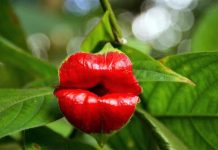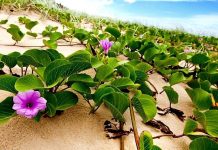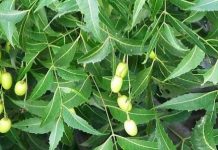Family: Santalaceae
Synonym: Sirium myrtifolium L.
Bengali/Vernacular name: Shwet chandan.
Tribal name: Nay-stha-pru (Rakhaing), Nitha (Tripura).
English name: White sandalwood, Fragrant sandalwood.
Description of the Plant: A small evergreen glabrous tree, up to 6-15 m in height, bark rough, cracked, heartwood is pale green to white as the common name indicates. Leaves opposite, elliptic, ovate, apex acute or shortly acuminate, base obtuse, attenuate, margin undulate. Inflorescence terminal and axillary, flowers scented, creamy-whit, turning red and purple. Fruit a drupe, globose, black when ripe.
Plant parts Used: Heartwood, root.
Traditional
Uses: The wood or essential oil is taken internally in the treatment of
genitourinary disorders, fever, sunstroke, digestive problem, and abdominal
pain.
Powdered heartwood is used to make incense sticks, burnt as perfumes in houses
and temples, or is ground into a paste and used as a cosmetic.
A few drops of sandalwood oil are given to relief the chronic bronchitis.
Oil prepared from heartwood and root is used to treat vomiting, and stomachache.
A paste made with wood is used externally to treat skin complaints.
Heartwood powder mixed with water then it is taken to treat gonorrhea.
Sandalwood oil is little used in modern herbalism; its main application is in
aromatherapy.
Distribution: This species is found in Habiganj district and planted in some other parts of the country.
Is this plant misidentified? If yes, please tell us….















… [Trackback]
[…] Info to that Topic: natureinfo.com.bd/santalum-album-l/ […]